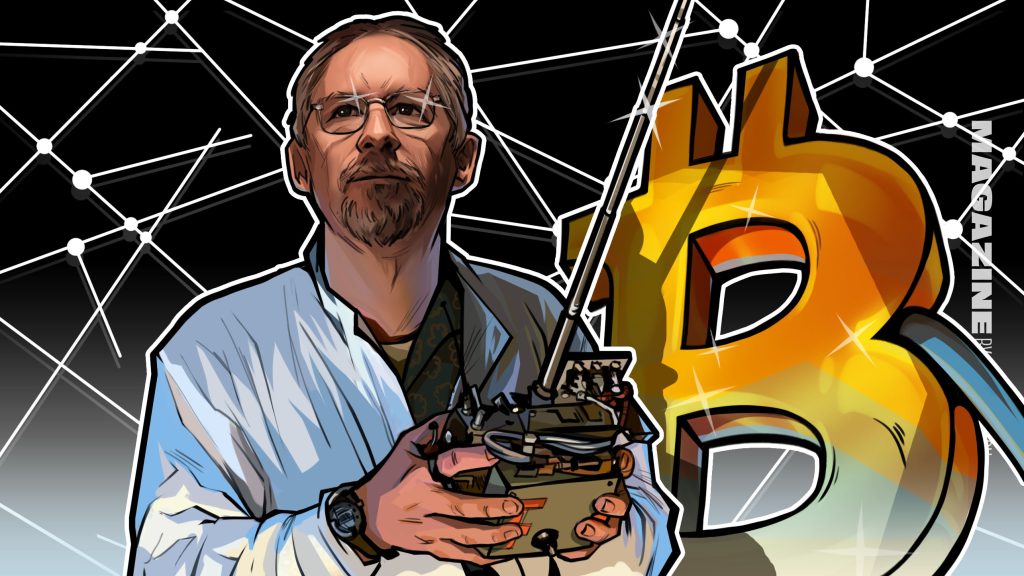|
|
For a man who many believe could actually be Satoshi, Blockstream CEO Adam Back is surprisingly understanding on the question of normies buying so-called “paper Bitcoin” via the ETFs.
“You have to have some empathy for the people who want to buy Bitcoin, but they don’t know how to do it, and it’s too complicated,” Back tells Magazine.
There are limits to his tolerance though. “You also don’t really want 90% of it in ETFs or something because that might start to become a problem,” says the London-born, Malta-based cryptographer.
“So long as there’s a decent proportion of Bitcoin in individual hands and cold storage by people who are paying attention to what matters for Bitcoin and are going to make a noise if they see something they don’t like, then it should be okay.”
Being cited in the Bitcoin white paper
The 54-year-old isn’t just any random Bitcoiner. He’s one of the originals, so much so that Satoshi themself cited Back’s Hashcash in the Bitcoin white paper, published in October 2008, as inspiration for Bitcoin’s proof-of-work system. Back originally developed Hashcash in 1997 to prevent email spam and DoS attacks, and it became the basis of Bitcoin’s mining algorithm.
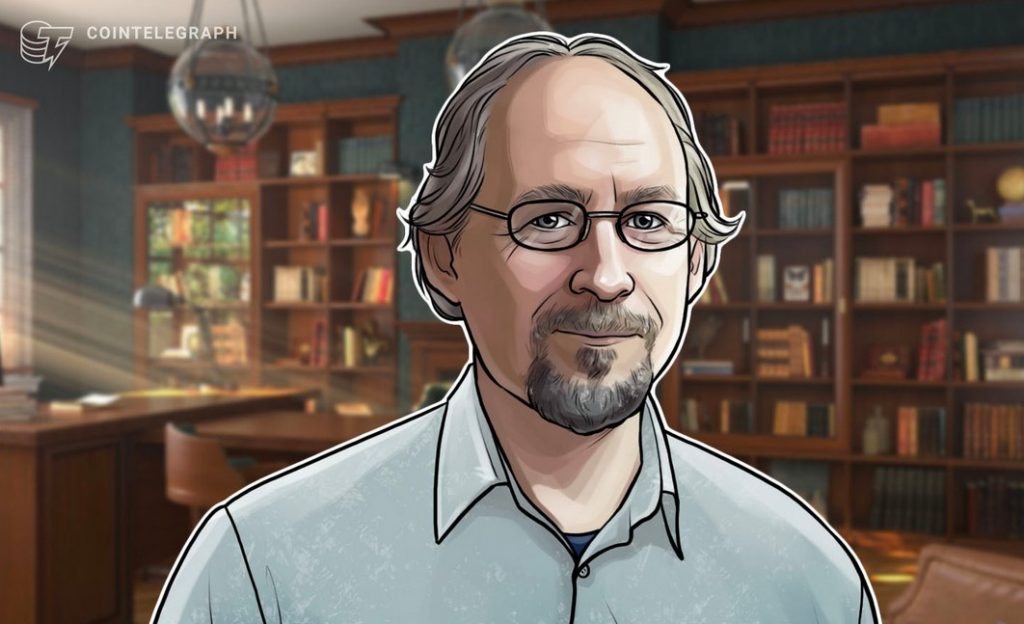
Satoshi said in the white paper, “To implement a distributed timestamp server on a peer-to-peer basis, we will need to use a proof-of-work system similar to Adam Back’s Hashcash [6], rather than newspaper or Usenet posts.”
He holds a computer science PhD in distributed systems from the University of Exeter and started Blockstream in 2014, which has essentially become a company focused on developing Bitcoin. The firm has its hand in everything from building out the infrastructure around Bitcoin sidechains to dedicating full-time contributors to improving the Bitcoin network.
Blockstream has done some pretty impressive things over the years. In August 2017, Blockstream announced it would use leased satellites to beam the Bitcoin blockchain all over the world so users worldwide could access the network’s data without having to use centralized internet services.
In October 2018, Blockstream launched Bitcoin’s first sidechain, the Liquid Network, which is a layer-2 scaling solution that allows faster, more confidential Bitcoin transactions.
Bitcoin ETFs make Bitcoin more “reachable”
It would be easy to wrongly assume that a hardcore Bitcoiner like Back might take issue with ETFs like many other Bitcoin maxis, given the “not your keys, not your Bitcoin” mantra.
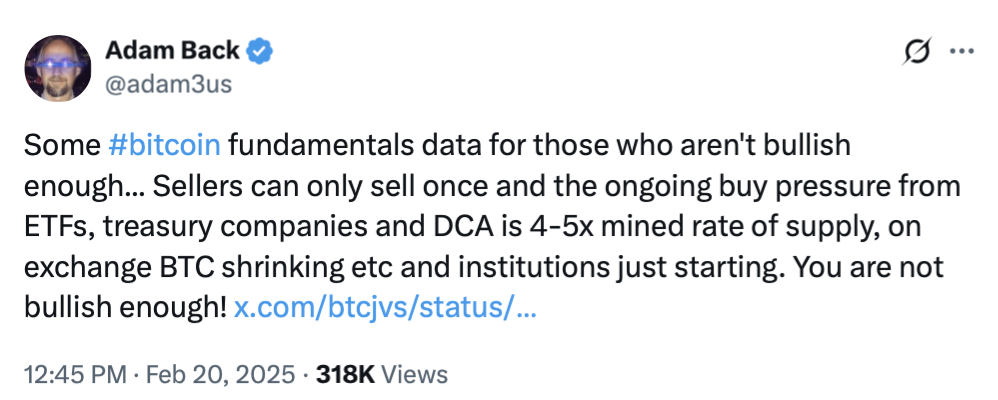
But Back emphasizes how spot Bitcoin ETFs bolster adoption and make the asset way easier for boomers to buy.
“It’s just accessibility now; now it’s become reachable, they can invest in it,” Back says.
Back says that ETF investors are typically long-term hodlers anyway.
“ETF buyers are sticky; they don’t panic sell. They tend to buy and hold for some years.”
Many ETF buyers work on the assumption you shouldn’t put money into the stock market if you need it in less than three years.
“If they use that approach with Bitcoin ETFs, they’re probably going to do quite well, whereas people who come through Bitcoin exchanges sometimes panic sell,” he adds.
Lately, some Bitcoin maxis have done a 180 on the ETFs, moving all their Bitcoin into ETFs for convenience and due to the security risks of custodying their own funds. Prominent Bitcoiner PlanB revealed in February that he transferred his entire stash to the dark side.
“Not having to hassle with keys gives me peace of mind. I guess I am not a maxi anymore,” PlanB said in an X post.
Meanwhile, the other big type of holder who sends shivers down Bitcoin maxis’ spines, governments, “seems to be kind of done” with dumping their seized Bitcoin, Back says.
“Some countries sold, you know, 10s of 1,000s of Bitcoin for like, I don’t know, $50 million, and it now would have been like $70 billion or something,” he laughs.
In July 2024, Germany sold 50,000 BTC for $2.87 billion. While they made a $740-million profit at the time, that would have been $1.98 billion if they had sold at Bitcoin’s current price of $96,053, according to CoinMarketCap data.
Governments around the world currently hold approximately 463,741 BTC — roughly 2.3% of Bitcoin’s total supply — according to CoinGecko data.
How annoying is it to be asked if you are Satoshi Nakamoto?
Given Back’s legendary status, it’s no surprise people keep speculating whether Back is Satoshi, a claim he strongly denies, but the bigger question is: How annoying must it be to get asked that every single day?
“It is okay, you just get used to it,” Back laughs. “It’s not crazy speculation,” Back explains, noting that it was just a small group of developers before 2010 who were working on early electronic money systems and designing cryptography.
“So, yeah, I’m not, but it’s not a crazy conspiracy.”
But Back wasn’t actually active in the Bitcoin community until 2013, and by that time, Satoshi had already vanished from the public eye.

“I went and read all the posts on the forum,” he says, referring to the famous BitcoinTalk forum where Satoshi made their final sign-off post in December 2010. “At some point, he stops participating.
“We’re probably never going to know,” Back says, referring to the mystery of Satoshi’s identity.
“People had, like, a decade to look through all that stuff. Look at the headers and the emails, look at the forum, and look for any hints.”
Back is fine with the idea that Satoshi’s identity will probably never be revealed. “It’s probably a good thing because it makes Bitcoin feel more like a discovery in a commodity than a startup or a company,” Back says.
Vitalik Buterin is dealing with a “power struggle”

And he points out, having a founder or CEO directing operations for a decentralized currency doesn’t make a lot of sense.
“A lot of the altcoins have a CEO and stuff, that’s weird,” Back says. He cites Ethereum co-founder Vitalik Buterin, who’s currently dealing with a “power struggle,” as a perfect example.
“He was like, ‘I’m in charge,” Back laughs, adding that misses the entire point of decentralization.
After Ethereum community members rallied behind Danny Ryan at the start of this year to become the new leader of the Ethereum Foundation, Buterin stepped in and said, “This is not how this game works.”
“The person deciding the new EF leadership team is me,” Buterin said in a Jan. 21 X post. It was surprisingly revealing about how much personal control Buterin still has over the foundation.
You may have picked up on the fact that Back has little patience for any other cryptocurrency besides Bitcoin. “I concluded very early, like 2013, when I got involved, it was a little bit scammy to be making your own coin, also profiteering,” he says.
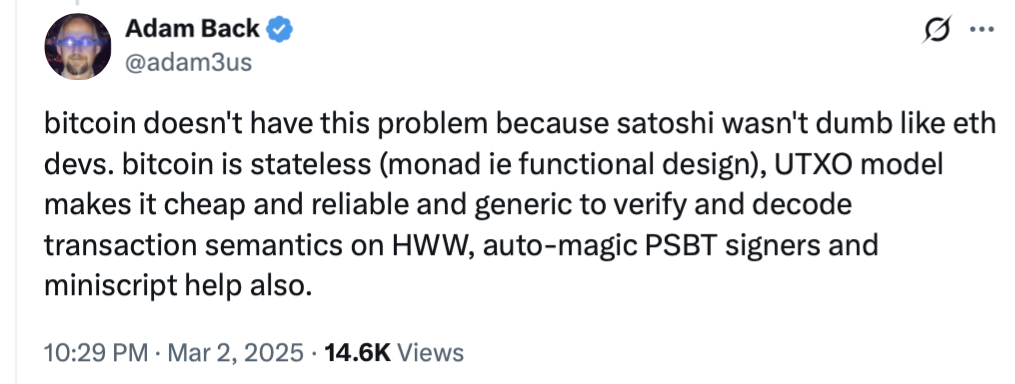
“I thought the best thing to do would be to try and help the Bitcoin mission. Either Bitcoin succeeds or nothing succeeds.”
Blocksize wars conspiracy
Back has faced his share of conspiracy theories. The most outlandish claim he’s come across was during the Blocksize wars, which was a debate about how to improve Bitcoin’s ability to handle more transactions, between 2015 and 2017. While some wanted to increase the block size to allow for more transactions, others didn’t.
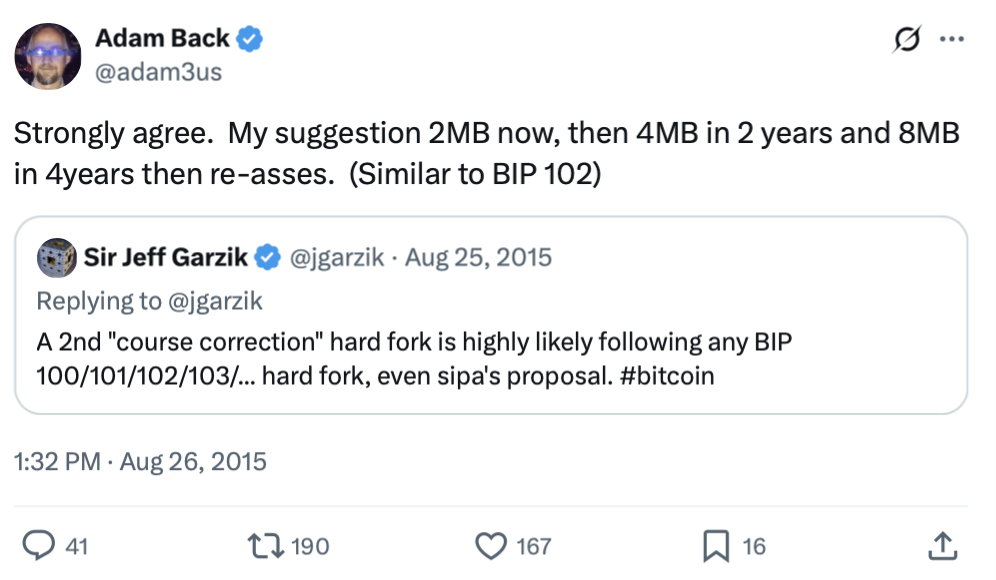
“They wanted big blocks, and some people at Blockstream didn’t, so they constructed a conspiracy about why Blockstream was the evil entity here,” Back says.
Back explains that, as tensions escalated within the Bitcoin community, someone created a detailed diagram, alleging that Blockstream was secretly funded by some of the world’s largest financial institutions.
“It was on a massive piece of paper, with like a string line diagram showing the Bilderberg and Mastercard and AXA and Blockstream,” Back says.
“And actually the Knights of Malta, which is kind of a Sovereign Military Order,” he adds.
They had “done some Google research” and “made all kinds of tenuous connections,” including Blockstream’s investment from AXA ventures, to come up with the conspiracy.
The divide between supporters of increasing the blocksize and those against it eventually led to a fork and the creation of Bitcoin Cash, which is a version of Bitcoin designed for everyday transactions.
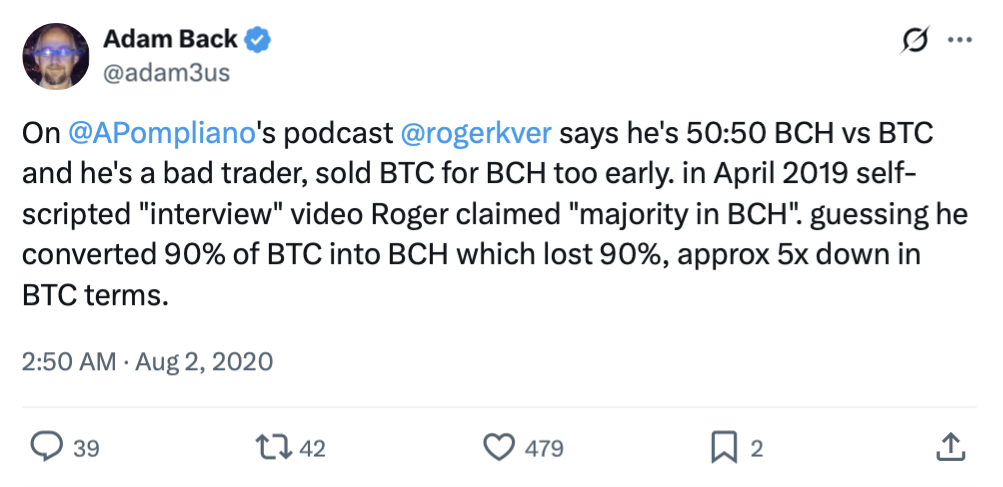
While Back remained loyal to Bitcoin, other early adopters like Roger Ver switched to supporting Bitcoin Cash, leading to ongoing public tension between the two over the years.
Bitcoin must stay decentralized
Bitcoin Cash has gradually reduced in prominence over the years as Bitcoin surged to new heights.
Back says the crucial aspect of the debates over Bitcoin’s future is ensuring it stays true to its ideals.

“We need to hold on to the decentralized nature of Bitcoin and its permissionless properties,” he added.
“Everyone wants to scale bitcoin. It’s really complicated and there is no silver bullet. What we’re trying to figure out is, what is the safe, pragmatic way to do this.”
Bitcoin price prediction
Back is pretty confident that Bitcoin could hit “a few hundred thousand” price tag by 2025.

Back points to the FTX bankruptcy as a major catalyst, saying that it’s now wrapped up and they’ll eventually pay out “around $16 billion” to investors, which he is confident that most of them will eventually buy back in.
FTX began repaying its “convenience class” creditors — those with claims under $50,000 — back in February, and the main group of creditors is scheduled to start receiving payments on May 30.
“You have to buy because the other alternative is you wait for it to fall,” Back says.
“If a lot of that gets paid out at once, you might see an effect of that in the market, too,” he adds.
Back is of the opinion that Bitcoin trading below $100,000 for the last few months is “probably just a temporary thing.”
“The Bitcoin market is kind of reflexive, so if the price jumps, people start buying it and push it up to more,” he says.
Bitcoin price mindset
Back says all the talk right now about whether Bitcoin can break past $100,000 or if it has already hit its ceiling reminds him of a similar scenario 12 years ago.
“During 2013, it went over $100, and I think people were skeptical it would reach the next target like $1,000,” he says. Then it reached the $1,000 price level, and the cycle repeated once more:
“Then some people were talking about $10,000, and people were saying that’s crazy.”
Back says it “sort of seems the same thing again and again, but 10 times bigger.”
So, knowing everything he knows now and seeing how Bitcoin has all played out, if Back could go back and change just one thing about his Bitcoin journey…it would be just one thing.
“Buying more earlier,” Back laughs.


Ciaran Lyons
We took an ETHSafari to see how crypto is working out in Africa
The ETHSafari crypto conference in Kenya is a world away from Token2049… and a completely different mindset.
Read more6 Questions for Leila Ismailova: Digital fashion and life after Artisant
Leila Ismailova left Belarus — and an epic TV career — behind when she moved to America. Today, she’s at the forefront of digital fashion.
Read moreEther’s price to go ‘nuclear,’ Ripple seeks $1B XRP buy: Hodler’s Digest, Oct. 12 – 18
